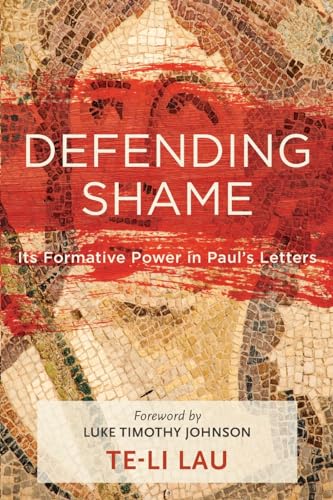Ezra, Nehemiah, and Esther
Written by Douglas J. E. Nykolaishen and Andrew J. Schmutzer Reviewed By Paul ByunThe Teach the Text Commentary Series, edited by Mark L. Strauss and John H. Walton, aims to be accessible for all readers while maintaining rigorous scholarship. Readers will not find extensive footnotes nor discussions on source or redactional criticism, but instead a commentary geared to plainly expositing the text and communicating its ideas to a modern audience.
Each exposition of a passage begins with a brief summary of the “Big Idea” and “Key Themes.” Then follows a literary-contextual, historical, and cultural analysis. After these the actual commentary on the verse(s) begins. The most helpful and creative segment of this commentary comes at the end of each passage. After some “Theological Insights” concerning the passage, the commentary focuses upon “Teaching the Text” and “Illustrating the Text.” Both of these segments make applying the passage much easier. The “Illustrating the Text” section, in particular, is creative and informative. Here readers will find helpful illustrations from literature, historical characters, and even sports.
The commentary begins with Nykolaishen’s section on Ezra-Nehemiah. Like most commentaries, the introduction starts with an evaluation of issues including authorship, dating, and historical setting (pp. 3–8). Nykolaishen concisely argues that Ezra and Nehemiah should be read as a single story (p. 3). Some readers may find Nykolaishen’s short assessment of the “Method of Composition” dissatisfying, but Nykolaishen seems to only be following the aim of the commentary series: “it is far more important to follow his [the author’s] didactic intention than to seek the solution to every historical question” (p. 5). So, questions regarding the odd chronology, the switching of language, and the shifting of narrators are glossed over as the biblical author’s use of various sources (pp. 4–5).
For general readers and preachers of Ezra-Nehemiah, the intermarriage crises in Ezra 9–10 and Nehemiah 13:23–31 may prove to be difficult to understand, apply, and preach. The reader, however, will find that these “tricky” bits of Ezra-Nehemiah are surprisingly well argued in such a small space. Nykolaishen does not identify the problem to be the intermarrying between ethnic groups because the listed nations in Ezra 9:1 no longer existed in the post-exilic period (p. 90). He concludes that “the major concern was not race or ethnicity but religious practices contrary to faith in Yahweh” (p. 90). Not all readers will agree with these conclusions, but these issues are reasonably dealt with.
The commentary of the book of Esther is written by Schmutzer. Similar to the introduction for Ezra-Nehemiah, the commentary begins with issues relating to authorship, dating, purpose, and themes. Here one can find answers to common questions, such as the absence of God (pp. 205–6) and even how Esther fits within the Megilloth (pp. 203–04). The introduction, however, lacks a discussion of the Alpha Text, which may be of interest to some academic readers.
Another welcome addition would be a section on the literary techniques within Esther. For instance, irony is frequently found throughout Esther to show a reversal of fortune. Esther 9:1–25 is usually understood as a prime example of irony where Haman and his sons are hanged instead of Mordecai (e.g., Sandra B. Berg, The Book of Esther: Motifs, Themes, and Structure, SBLDS 44 [Missoula, MT: Scholars Press, 1979], 104–6). This would help the reader to appreciate the subtle contours within the narrative. Although Schmutzer does not emphasise the technique of irony in Esther 9:1–25, he does focus upon God’s intricate work behind the scenes: “God is able to upend any deceitful person, evil policy, or sinister scheme in order to further his own plan” (p. 283). Readers will also appreciate the extended explanations sporadically placed throughout the commentary (e.g., pp. 216, 228, 246, 291). These notes further illuminate the book of Esther and its context. For example, Schmutzer adds an extended note on “shame” in the context of the book (p. 246). This is a helpful clarification for a modern audience who may now know the concept of shame in the ancient Mediterranean world.
Overall, this commentary achieves its aims. There is no doubt that the layperson, student, and pastor would benefit from reading this commentary. However, the main beneficiary would be the pastor who wishes to preach through Ezra, Nehemiah, and Esther. Students and scholars who wish to research the more technical aspects of Ezra, Nehemiah, and Esther would need to consult the references within the “Select Bibliography” at the end of the commentary (pp. 306–8).
Paul Byun
Paul Byun
The University of Sydney
Sydney, New South Wales, Australia
Other Articles in this Issue
The concept of personhood is crucial for our understanding of what it is to be human...
Text-Criticism and the Pulpit: Should One Preach About the Woman Caught in Adultery?
by Timothy E. MillerThis article considers whether “The Woman Caught in Adultery” (John 7:53–8:11) should be preached...
Celebration and Betrayal: Martin Luther King’s Case for Racial Justice and Our Current Dilemma
by James S. SpiegelDuring the American Civil Rights Movement, Martin Luther King’s principal arguments reasoned from theological ethics, appealing to natural law, imago Dei, and agape love...
Many churches switched to streaming or recording their services during the COVID-19 crisis...







